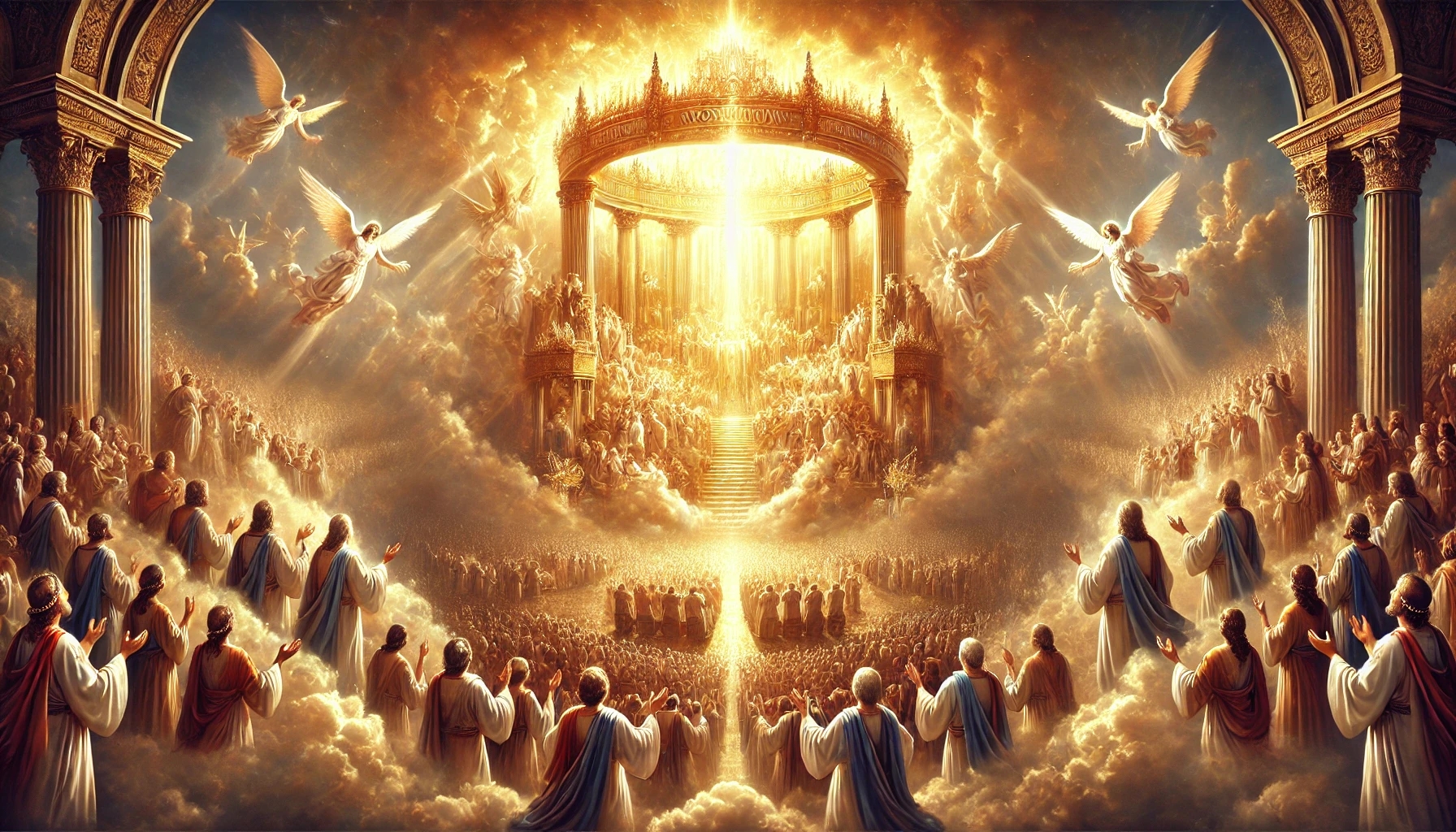

11.5 The Vindication of God’s Name
God’s Name Will Be Vindicated
Read Romans 3:1–4 together with Isaiah 5:3–4. What does this teach about how God is justified in the cosmic conflict?
The Bible shows us that God’s name—His essence, His character—was questioned throughout salvation history. Satan claimed that God was not perfectly just and loving. Yet through the plan of redemption, especially through the sacrifice of Christ, God’s name is ultimately justified. Romans 3:25–26 and 5:8 demonstrate that God has fully revealed His love and justice.
-
God’s Invitation to Judge His Essence
-
Romans 3:1–4 and Isaiah 5:3–4 reveal that God “presents Himself for judgment” to humanity, even though as creatures we are not in a position to judge Him.
-
God acts not arbitrarily but in a way that is understandable for all. In the end, we will recognize that His actions were perfectly just and full of love.
-
-
The Complete Justification of God in the Cosmic Conflict
-
Throughout history, God has demonstrated His justice in many ways—through the law, through prophets, through His people Israel.
-
But the ultimate proof was the cross of Jesus Christ. There, it became evident that God neither abandoned His justice (sin had consequences) nor His love (He took the penalty upon Himself).
-
In the last days, when “all the books are opened,” even the greatest skeptic will see: God was always fair, patient, and just.
-
-
Significance for Our Daily Life
-
When we see suffering and injustice today, we may ask: Is God truly just? Yet the Bible shows us that His plan is perfect, even if we do not always understand everything.
-
We are invited to trust God, even when things in our lives or in the world are hard to comprehend.
-
Our faith in God’s perfect character gives us hope—we know that evil will not prevail, but that God’s truth and love will triumph.
-
Conclusion
God will justify Himself before all of creation—not because He must, but because His love and justice are so perfect that everyone will recognize it. The cross is the greatest proof that God is just. Now it is up to us to trust Him and reflect His nature in our lives.
Read Revelation 15:3 and 19:1–6. What do these verses teach about the justification of God’s name in the end?
Revelation 15:3 and 19:1–6 present a powerful picture: In the end, when God’s salvation plan is fulfilled, everyone will recognize that He was perfectly just and good. The redeemed praise God with a song of justice and victory.
-
The Universal Recognition of God’s Justice
-
Rev 15:3: The believers sing the “song of Moses and of the Lamb” and testify, “Your ways are just and true, O King of the saints!”
-
This means that God has always acted justly, and His decisions were perfectly wise.
-
-
Rev 19:1–6: A great multitude rejoices, praising God for His righteous judgment and His victory over evil.
-
It becomes clear: God’s justice is evident not only to a few but to the entire universe.
-
-
-
Why Is the Justification of God’s Name Important?
-
Satan attacked God’s character (cf. Genesis 3:1–5), but through salvation history, God shows that He is perfectly just and loving.
-
No genuine trust is possible without clear truth:
-
A deep, loving relationship can only be built on truth and trust.
-
If God’s name and character were questioned, true love between Him and His creatures could not exist.
-
-
The judgment before and after Christ’s return demonstrates God’s justice:
-
The redeemed may refer to the books (1 Corinthians 6:2–3) to see that God’s judgments were absolutely just and full of love.
-
Every question will be answered, so that no doubt remains about God’s character (1 Corinthians 4:5).
-
-
-
In the End, Everyone Will Confess: God Is Just!
-
Philippians 2:10–11: “That at the name of Jesus every knee should bow, in heaven and on earth and under the earth, and every tongue confess that Jesus Christ is Lord.”
-
Even those who rejected God will acknowledge that His ways were right, just, and full of love.
-
Conclusion
In the end, no one will have any doubt about God’s character. His name will be completely justified because everyone will see that He was always loving, patient, and just. The cross has already proven this, and on the day of judgment, the entire cosmos will recognize and testify to it.
The justification of God’s name is not only a subject for the end of time—it holds deep significance for our personal faith and everyday lives.
-
Trusting in God’s Justice—Even When We Do Not Understand Everything
-
In difficult times, we often ask, “Why does God allow this?”
-
The Bible shows us that God does not hide from difficult questions—He will fully justify Himself in the end (1 Corinthians 4:5).
-
Our trust in God’s character helps us hold on to Him even in hardship, knowing that He always acts justly and lovingly.
-
-
Our Lives Reflect God’s Name
-
We are called to make God’s character visible in the world (2 Corinthians 3:3).
-
By living honestly, justly, and lovingly, we testify to God’s justice.
-
Our response to injustice and suffering should not be to accuse God, but to honor His name through our actions.
-
-
Hope for the Final Victory
-
The world often seems unjust, yet we know that evil does not have the final word!
-
Revelation 15:3 and 19:1–6 remind us that, in the end, everyone will recognize that God was just.
-
This assurance empowers us to remain faithful even when we encounter injustice or suffering.
-
Conclusion
God’s name is justified because His love and justice will ultimately be fully revealed. Until that day, we are called to trust Him, honor His name in our lives, and live with the hope of His final justice.
Because God is just, we can live in peace—even in an unjust world.















